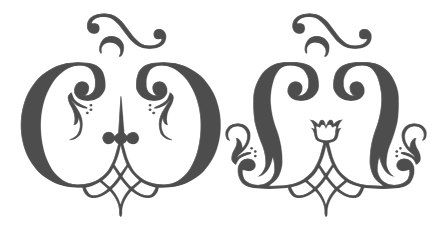TYPE DESIGN INFORMATION PAGE last updated on Sun Dec 7 19:46:03 EST 2025
FONT RECOGNITION VIA FONT MOOSE
|
|
|
|
Church Slavonic Initiative
[Aleksandr Andreev]
As part of the Church Slavonic Initiative, we find a set of free church slavonic style typefaces at the CTAN site, with TeX support. Church Slavonic (also called Church Slavic, Old Church Slavonic or Old Slavonic; ISO 639-2 code cu) is a literary language used by the Slavic peoples; presently it is used as a liturgical language by the Russian Orthodox Church, other local Orthodox Churches, as well as various Byzantine-Rite Catholic and Old Ritualist communities. The fonts are designed to work with Unicode text encoded in UTF-8. The package is maintained (in 2016, at least) by Mike Kroutikov and Aleksandr Andreev. The main people of the Church Slavonic Initiative are Aleksandr Andreev, Yuri Shardt and Nikita Simmons. The fonts:
|
EXTERNAL LINKS |
| | |

file name: Aleksandr Andreev Nikita Simmons Cathisma Unicode 2013 2020

file name: Aleksandr Andreev Nikita Simmons Oglavie Unicode 2013 2020

file name: Aleksandr Andreev Nikita Simmons Pochaevsk Unicode 2019 2020

file name: Aleksandr Andreev Nikita Simmons Shafarik 2014 2020

file name: Aleksandr Andreev Nikita Simmons Shafarik 2014 2020

file name: Aleksandr Andreev Nikita Simmons Shafarik 2014 2020

file name: Aleksandr Andreev Nikita Simmons Triodion Unicode 2013 2020

file name: Aleksandr Andreev Nikita Simmons Vertograd Unicode 2019 2020

file name: Aleksandr Andreev Nikita Simmons Vertograd Unicode 2019 2020

file name: Aleksandr Andreev Nikita Simmons Fedorovsk Unicode 2013 2015

file name: Aleksandr Andreev Nikita Simmons Fedorovsk Unicode 2013 2015b

file name: Aleksandr Andreev Nikita Simmons Pomorsky Unicode 1999 2015

file name: Aleksandr Andreev Nikita Simmons Pomorsky Unicode 1999 2017

file name: Aleksandr Andreev Nikita Simmons Pomorsky Unicode 1999 2017c

file name: Aleksandr Andreev Nikita Simmons Pomorsky Unicode 1999 2017e

file name: Alexey Kryukov Aleksandr Andreev Monomakh Unicode 2011 2017

file name: Alexey Kryukov Aleksandr Andreev Monomakh Unicode 2011 2017a

file name: Alexey Kryukov Aleksandr Andreev Monomakh Unicode 2011 2017d

file name: Vladislav V Dorosh Indiction Unicode 1996 2017

file name: Vladislav V Dorosh Indiction Unicode 1996 2017b

file name: Vladislav V Dorosh Indiction Unicode 1996 2017c

file name: Aleksandr Andreev Yuri Shardt Nikita Simmons Ponomar Unicode 2011 2015

file name: Aleksandr Andreev Yuri Shardt Nikita Simmons Ponomar Unicode 2011 2015b

file name: Aleksandr Andreev Yuri Shardt Nikita Simmons Ponomar Unicode 2011 2015c

file name: Aleksandr Andreev Menaion Unicode 2013 2015

file name: Aleksandr Andreev Menaion Unicode 2013 2015b
| | |
|
Luc Devroye ⦿ School of Computer Science ⦿ McGill University Montreal, Canada H3A 2K6 ⦿ lucdevroye@gmail.com ⦿ https://luc.devroye.org ⦿ https://luc.devroye.org/fonts.html |

